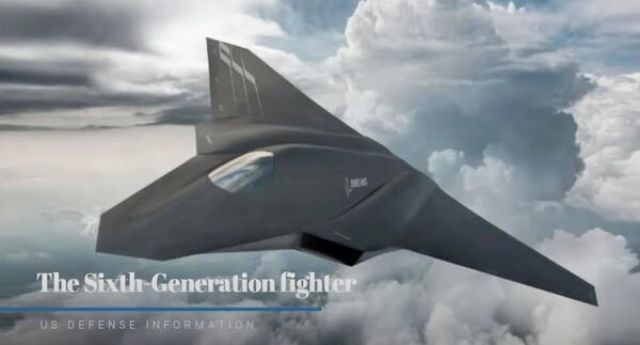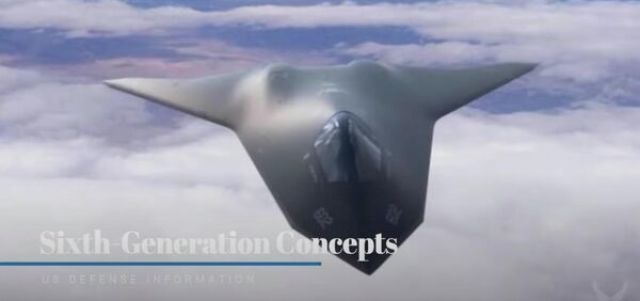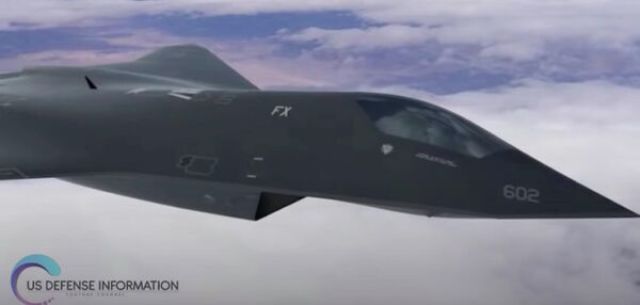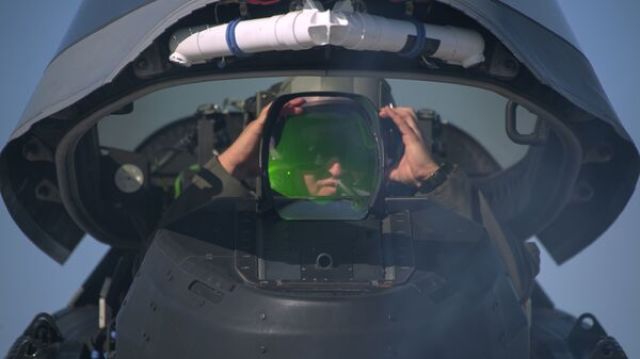MOSCOW, October 12 — RIA Novosti, Andrey Kotz. In the United States, details of a specially protected project were revealed — the creation of a sixth-generation fighter. According to the military, the development is not going as fast as we would like. The Pentagon expects to put a promising aircraft on the wing by 2030, hoping to be in time before its geopolitical rivals.
Completely invisible
The NGAD (Next Generation Air Dominance — "The Next Generation of Air Superiority") program is completely classified. Unknown cost, tactical and technical characteristics, appearance of the new car.
The work has been going on for several years. In September 2020, a full-size prototype, according to the US military, took to the sky for the first time.

F-X Fighter Image Source: © US Defense Information
The aircraft, designated F-X, will be able to perform combat missions near the Chinese borders without refueling, as well as escort bombers deep into enemy territory to break through air defense. Completely invisible to high- and low-frequency radars, it takes on board much more weapons than the fifth-generation F-22 fighter. Analysts have suggested that the promising complex will not be inferior in size to a bomber. It was also noted that the car is likely to receive a laser weapon.
The appearance of the F-X is a topic for speculation. Only the Pentagon knows what the sixth-generation fighter will look like. However, back in 2018, the military department published a video created by computer modeling. There is a typical "invisible": "tailless" with smooth external contours and a minimum of sharp edges.
The airframe is made according to an integrated circuit with a high-positioned wing and a pair of engine nacelles under the bottom. The power plant consists of two turbojet engines with flat nozzles. Judging by the glazed cockpit, we are talking about a manned version.
But many experts believe that the sixth-generation fighter should be unmanned. However, whether the new aircraft will be similar to the concept from the video is still a mystery.

F-X Fighter Image Source: © US Defense Information
Other possible features: highly sensitive enemy detection sensors, the same fuel efficiency in different flight modes, weapons based on new physical principles.
Lots of planes
The NGAD program is a whole family of related systems for air combat. Not only fighter jets, but also drones, satellites in space, as well as platforms in cyberspace. Therefore, NGAD is sometimes called a "system of systems". The Pentagon does not exclude that within the framework of the project they will create not one aircraft, but several.
"It is hardly reasonable to develop one type of aircraft," Will Roper, assistant to the head of the Air Force for Procurement, Technology and logistics, previously reported. — Digital engineering opens up wide possibilities for different options. The main thing is to ensure the unification of the entire park. That is, to create common auxiliary equipment, cabin configurations, interfaces, a single architecture. The Pentagon will constantly conclude contracts with several suppliers for promising machines, choose a new design approximately every eight years and put it into production."
This solves several problems at once. Firstly, technology does not stand still: the fact that today is a breakthrough is already commonplace tomorrow. Continuous production of new types of aircraft will make it possible to implement any novelties of the defense complex and always have state-of-the-art equipment in service.

F-X Fighter Image Source: © US Defense Information
Secondly, today the lion's share of the Pentagon budget is spent on the repair and modernization of existing aircraft. After 15 years of operation, costs increase dramatically. Roper believes that it is more profitable to build less durable aircraft and write them off after the expiration date.
Thirdly, the Air Force will receive aircraft with different capabilities. For example, one option — with laser weapons, the second — with hypersonic missiles, the third — with the most modern sensors, the fourth — unmanned. The developers emphasize that the constant updating of the fleet will give a serious advantage over the Russians and Chinese, who will not know what to deal with.
Robot Assistants
The alternative is the most modular platform, rapidly changing for specific combat tasks. Whichever option the Pentagon chooses, the promising fighter will not operate alone in the air. US Air Force Secretary Frank Kendall clarified in September that an "army of drones" would be attached to the car. Each aircraft will be able to simultaneously control five aircraft.
Kendall stressed that the characteristics of these UAVs, as well as their appearance, are still classified. But he did not rule out that the line of copters will be presented before the work on the fighter is completed.
The USA has been engaged in the concept of "Loyal Wingman" for several years. We are talking about a drone capable of largely assuming the functions of a pilot: reconnaissance, shock, electronic countermeasures. The main task is to act where it is dangerous for a person. For example, in areas covered by a deep-echeloned enemy air defense system.
The main competitor
They wanted to get the F-X by 2025. However, the technologies are so complex that the sample will not be shown until 2030 - and this is according to the most optimistic forecast. The Pentagon is nervous, as rivals are already treading on their heels.
"The Chinese sixth—generation fighter program is on the right track," US Air Force General Mark Kelly told reporters. — They do not debate the relevance of air supremacy, but methodically and systematically create a new aircraft. We need to be sure that we will get a promising car at least a month ahead of the competition."
Beijing presented the concept at Airshow China in 2021. Similar to the American one: two engines, a cockpit. Weapons for low visibility are placed inside the fuselage. Detailed characteristics are not disclosed yet. Serial production is planned by 2035.

